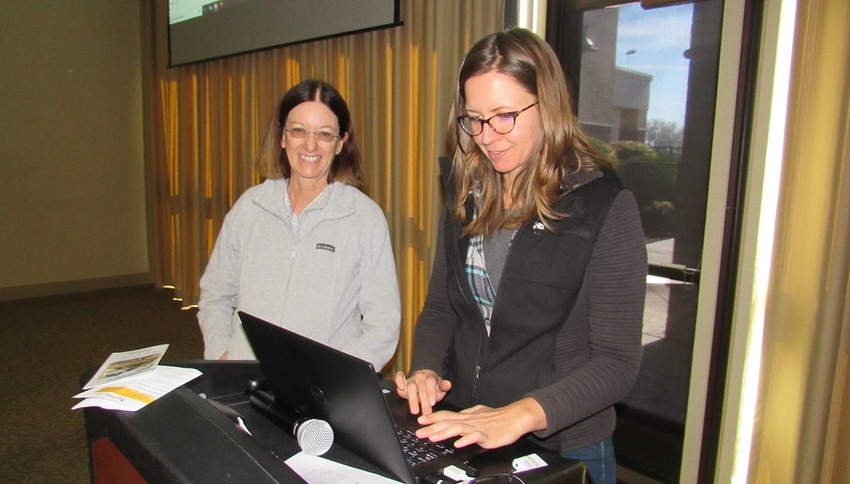
It’s like driving through the proverbial small town — if you blink, you’ll miss it.
That’s how California’s almond trees did their flash bloom this year and it happened so quickly, if you blinked for too long, the petals were already falling.
"Most everything is past peak bloom now," says Katherine Jarvis-Shean, Orchard Systems Advisor for the University of California Cooperative Extension serving Sacramento, Solano and Yolo counties.
But you should have been there at the height of the bloom right around Valentine’s Day before the white and pink petals started to fall and turn into what some growers refer to as "valley snow."
"It was a dry February with a pressure front sitting off the shoulder of California, stopping wet conditions from coming in and that’s what led us into the bloom. We went from maybe five flowers on a tree to 70% of it flowered and open just four days later. It was like a sea of white because nothing else was blooming, not even the leaves then, just white all the way down the rows until the petals fall off and leave a blanket of white on the orchard floor."
While the bloom may not be earlier than usual this year, it came and went faster than usual. "Barring the unexpected in connection with timing, I’d anticipate harvest should come in around the second week of August in our area," she says.
"Having all those blooms flash out means all the flowers essentially started the race at the same time, so they will hopefully be finishing the race at the same time so managers can get ready for harvest and get the almonds off the trees in a timely fashion."
A good year for growers?
So if everything got off the starting blocks on time and at the same time, does this portend a good year for almond growers?
"Either you get it right or it goes wrong in terms of things that affect your yield, so having a nice bloom with good overlap of your target variety (normally nonpareil) that sets up good conditions for your pollinators, that also sets up good conditions for high yield," she said. “If we do the rest of it right, it could even set up a situation with more nuts than the trees can support."
Too much of a good thing? "Trees out here undergo what we call ‘June Drop’, in late May or early June, where trees self-correct. They can only support so much crop depending on how many leaves they have and how much carbohydrate they can put out, what their nutrient status is, so they correct things, they drop some of the nuts in late spring."
Jarvis-Shean suggests this year may see quite a bit of drop. "We might have more June drop than in most years just because things are starting out so nice that the trees might set heavier crops than they are capable of carrying."
Her advice to growers is "Don’t freak out if you get a lot of that drop in late May. Don’t focus on what’s on the ground, but what’s left up in the tree."
Nonpareil is the go-to
Although there are several varieties of almonds, the nonpareil is the go-to, the backbone of the industry for a couple of generations. "The majority of almond acreage is planted with that variety because it’s high-yielding and gets you the best price. There are a couple of other varieties on the market, what we call hard shell and some self-fertile varieties moving into the California market, but nonpareil is still the dominant variety."
There’s an overall optimistic outlook dependent on other variables. "It’s great to have a warm and dry bloom window, but that also means we didn’t get much in the way of rain or snowpack. Where I am in the Sacramento Valley, we usually get about 20 inches of precipitation and we’ve had far less than that at this point. We often see rain in March, so we’re hoping for a little more before winter and the rainy season wraps up."
Likewise, with no big freezes detrimental to insect populations, not only did the trees get off to a good start, so did the variety of insects and that could mean more generations of navel orange worms that pest control advisors are going to have to keep an eye on.
"You can’t control the weather, so when it turns out in your favor in terms of bloom, you just take it and run with it and this is looking like it could be a good year for us."
For more news on tree nuts as reported by growers and farm advisors, subscribe to the Tree Nut Farm Press e-newsletter.
About the Author(s)
You May Also Like




